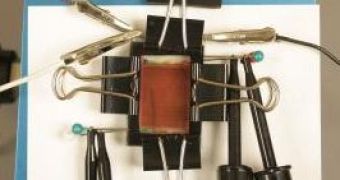Tablets and e-readers are attracting more and more people because of their cool design and ease of use, and they are only going to improve, as display technology keeps getting better every day.
Scientists at the University of Cincinnati Nanoelectronics Laboratory have published their analysis of future display technologies in the American Institute of Physics' Applied Physics Letters, as they are working on an alternative to low-power displays.
Some e-readers use electrophoretic displays in which each pixel is made of minute capsules containing black and white particles moving in opposite directions under impulse from an electric field.
The problem is that the screen image is rather black-on-gray than black-on-white and also the limited velocity of the particles gives a slow switching speed of nearly a second, and it limits features like animation, video or touch commands.
Professor Andrew J. Steckl, director of the NanoLab at UC's Department of Electrical and Computer Engineering explains that their “approach is based on the concept of vertically stacking electrowetting devices as the electric field controls the 'wetting' properties on a fluoropolymer surface, which results in rapid manipulation of liquid on a micrometer scale.
“Electrowetting displays can operate in both reflective and transmissive modes, broadening their range of display applications, and now, improvements of the hydrophobic insulator material and the working liquids enable EW operation at fairly low driving voltages (~15V).”
Professor Steckl along with Dr Han You, a research associate in the NanoLab, have proven that the vertical stack electrowetting structure can make multicolor e-paper devices, with a higher resolution and switching speeds that enable video content displays.
This only means that e-readers and tablets are about to become even more performant and look much better than they do currently.
Unlike other technologies, electrowetting reflective display screens have many advantages: they are very thin and have a switching speed that allows video display, they offer a wide viewing angle and also consume very little energy, as Steckl sustains.

 14 DAY TRIAL //
14 DAY TRIAL //